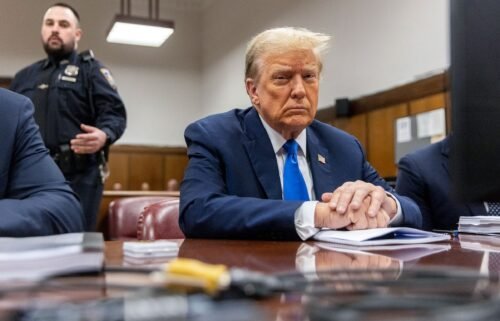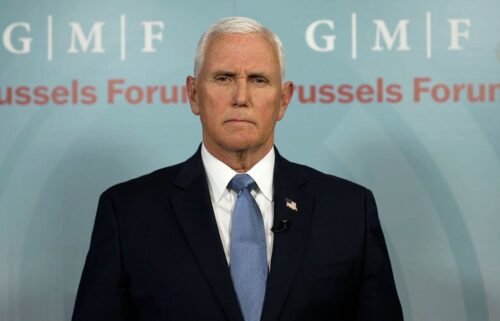New Public Service Loan Forgiveness rules: What borrowers need to know

The US Department of Education recently announced significant changes to a federal student loan forgiveness program. Students are seen graduating from Pasadena City College in June 2019.
By Katie Lobosco, CNN
The US Department of Education recently announced significant changes to a federal student loan forgiveness program that aims to help government and nonprofit workers but has failed in many cases to deliver on its promise of debt relief.
Eligibility for the Public Service Loan Forgiveness program is temporarily expanded through October 31, 2022, so that it now includes borrowers who have older loans that didn’t originally qualify as well as those who were in the wrong repayment plan but met the other requirements.
More than 550,000 people could be see their debt wiped away sooner than expected due to the changes to PSLF, the Department of Education said. That includes 22,000 borrowers who are immediately eligible for debt forgiveness.
Here’s what student loan borrowers need to know about who is eligible and what steps they may need to take to receive debt relief.
Here’s who was previously eligible
The program was created in 2007 and provides an incentive for workers to remain in lower-paying, public service jobs despite their student debt. Teachers, social workers and first responders can be eligible as well as doctors and lawyers — if they were employed full time by a nonprofit or the government while making payments.
After borrowers make 120 monthly payments, their remaining federal student debt is wiped away.
But prior to the recently announced changes, eligibility also hinged on having a Direct Loan and being enrolled in an income-driven repayment plan, which sets payments based on income and family size. Those with Federal Family Education Loans, which were made by private lenders but backed by the government, did not qualify. More than 80% of borrowers who have filed forms that did not meet the program’s requirements had one of these loans.
Borrowers say those qualifications were not always clearly communicated by the company servicing their loans, and many discovered they weren’t eligible for debt relief only after making nearly 120 payments.
Borrowers are allowed to consolidate a Federal Family Education Loan into a Direct Loan to become eligible for the program, but none of their previous payments would count toward the required 120 — until now.
Here’s who gained eligibility
Due to the temporary waiver, it no longer matters what kind of federal student loan a borrower has or what payment plan he or she is enrolled in. All payments will be eligible for the Public Service Loan Forgiveness program if the borrower was working full time for a qualifying employer.
RELATED: Biden extends student loan payment pause to January 31
The Department of Education will review past payments to count those made on Federal Family Education Loans. It will also count months that service members spent on active duty toward PSLF, even if loan repayment was on a temporary suspension through a deferment or forbearance.
The department’s review will also take a look at payments that were potentially miscounted by the company or organization servicing the loan. In some instances, borrowers missed out because their payments were off by as little as a penny or late by a few days. Sometimes a payment was posted but the record showed that no bill was generated. The Department of Education says it will adjust the count for borrowers affected by this issue as well.
What to do now and how long it will take
Some borrowers won’t have to do anything and the department will automatically review their payments. This applies to anyone who already has consolidated their loans into a Direct Loan and has had at least some qualifying employment certified.
These borrowers should look out for an email from Federal Student Aid in the coming weeks regarding how many additional payments could qualify.
Borrowers who currently have a non-qualifying loan, such as the Federal Family Education Loan, must first consolidate their debt into a Direct Loan and then submit a PSLF form to show qualifying employment by October 31, 2022.
The department warns that there may be delays in processing what it expects to be an influx of PSLF applications. It says to expect account adjustments to be made in the “coming months.”
How the count is different this time
Borrowers who have experienced errors by their loan servicer — the company that handles billing and other services — or received misinformation about Public Service Loan Forgiveness in the past may be skeptical of the changes.
FedLoan, the servicer responsible for handling PSLF borrowers, was often criticized for making errors. It settled a lawsuit brought by Massachusetts Attorney General Maura Healey earlier this year that alleged it violated state and federal consumer protection laws. FedLoan recently announced that it plans to end its loan servicing contract with the government. It’s unclear what organization or company will handle the loans next.
But under the new waiver, the review of PSLF payments will be conducted by the Department of Education itself based on a database separate from those of the loan servicers that shows when a payment was made.
“That’s what makes this solution kind of brilliant. They are eliminating all those other problems,” said Betsy Mayotte, president and founder of The Institute of Student Loan Advisors. The nonprofit provides free advice to student loan borrowers and has tips about the new PSLF changes here.
Can a borrower receive a refund?
Yes, it’s possible. Borrowers who made more than 120 qualifying payments may receive a refund for the extra payments if they were made after they consolidated their loan.
For example, a borrower who made 60 payments on a Federal Family Education Loan and then consolidated and made 70 payments on a Direct Loan could be refunded for those 10 extra payments in addition to immediately seeing their outstanding debt canceled.
These people remain ineligible
Parents who borrowed what’s known as a PLUS loan from the federal government do not gain any benefit from the Public Service Loan Forgiveness waiver. PLUS loans are the only federally backed loans available to parents, and they generally come with higher interest rates than loans available to students.
Parents with a PLUS loan who work in a qualifying government or nonprofit job can still consolidate that loan into a Direct Loan to become eligible for PSLF — as they could before the new guidelines were put in place. But payments made before the consolidation won’t count toward the 120 needed for forgiveness.
Payments borrowers may have made while a Direct Loan was in default will continue to not count toward forgiveness, and borrowers who have already paid off their loans won’t receive a refund if more than 120 payments were made.
The-CNN-Wire
™ & © 2021 Cable News Network, Inc., a WarnerMedia Company. All rights reserved.

